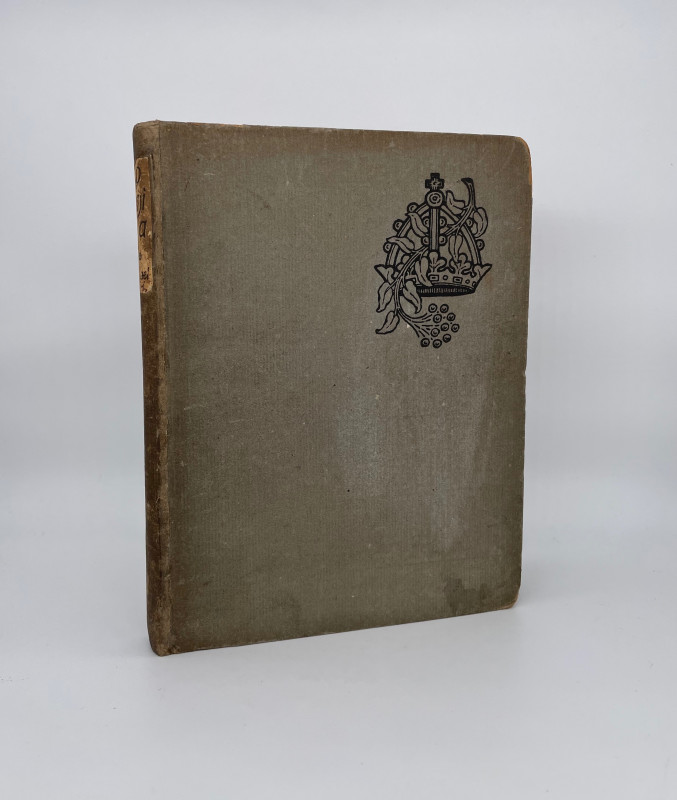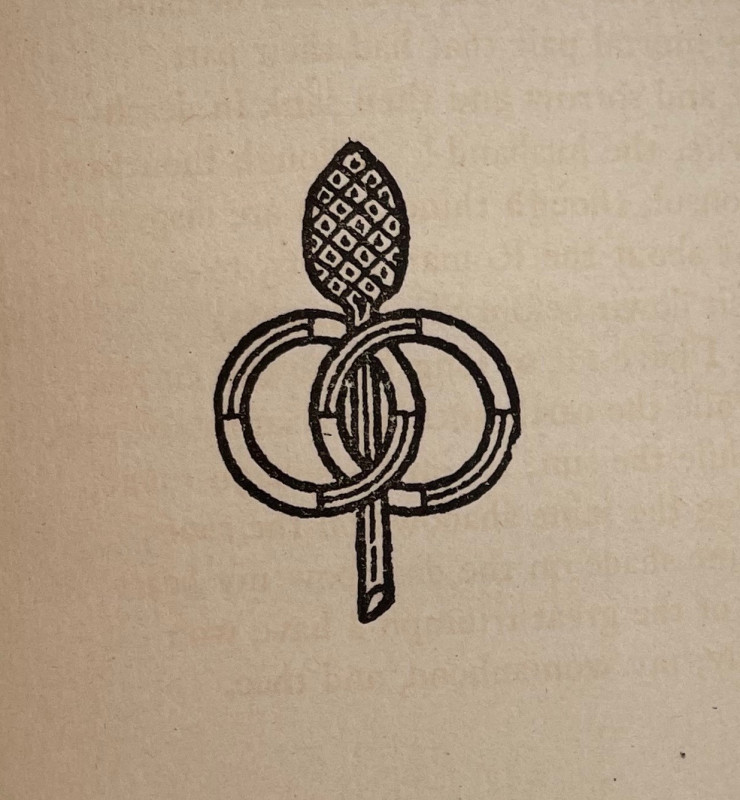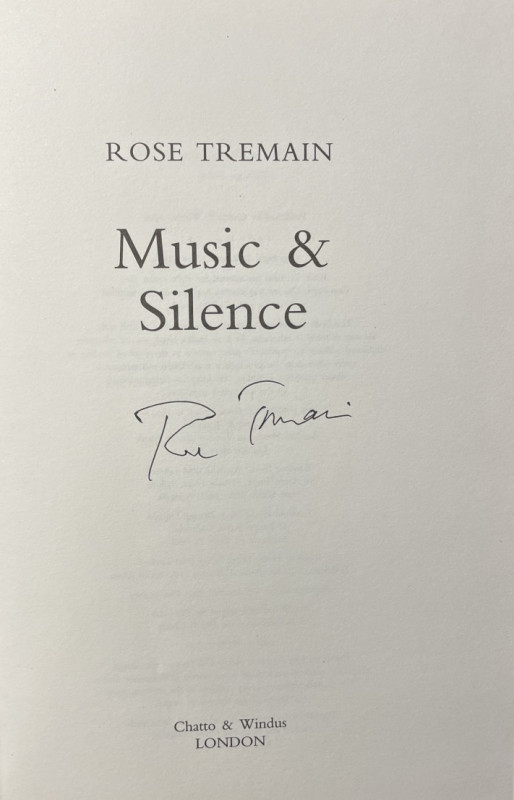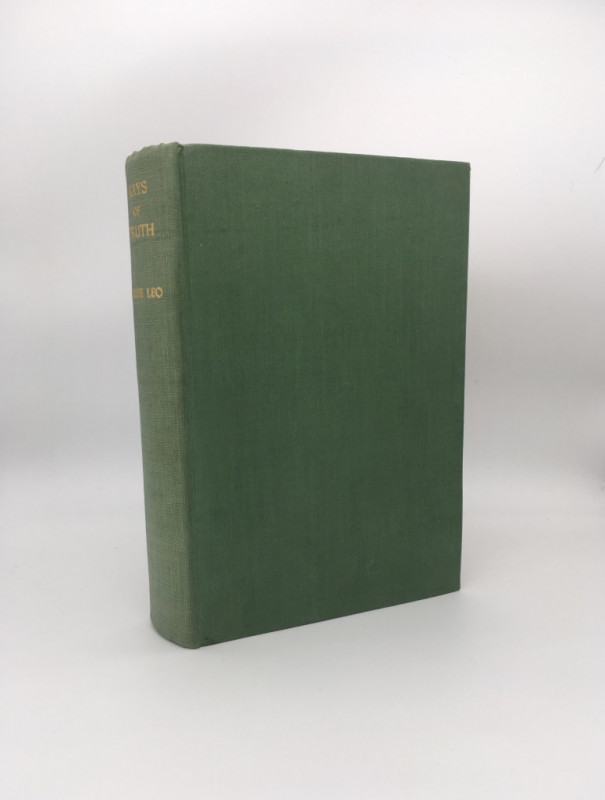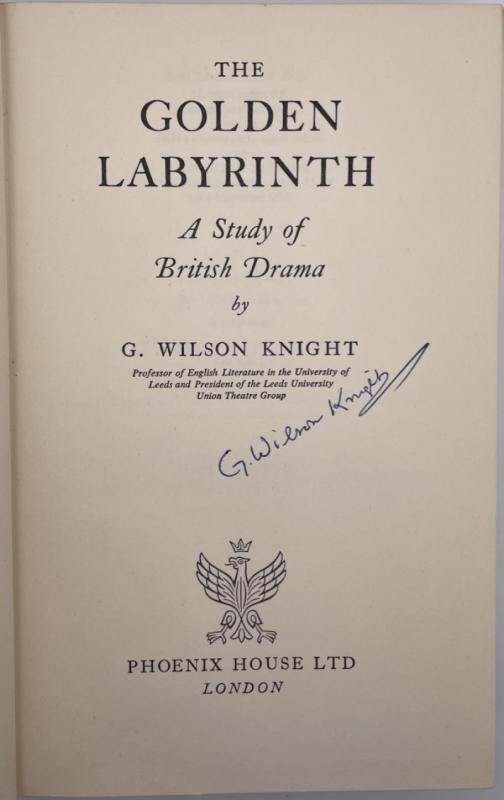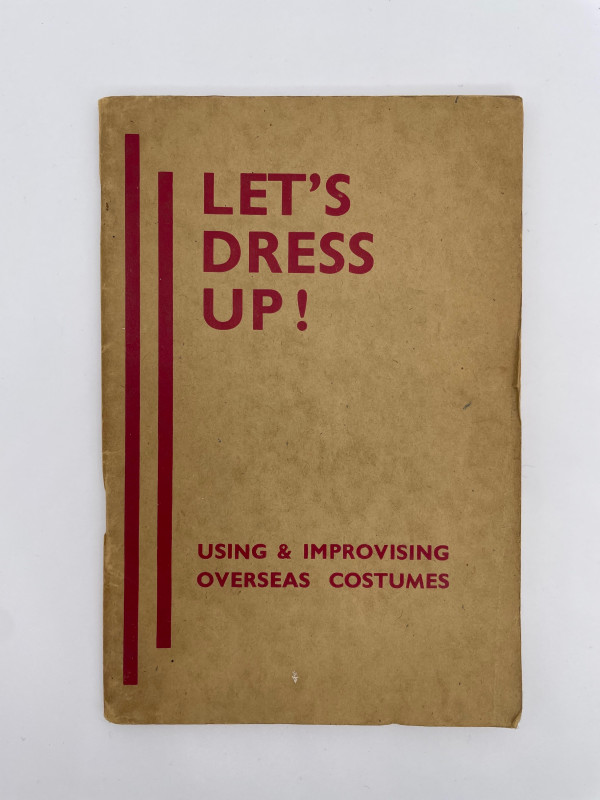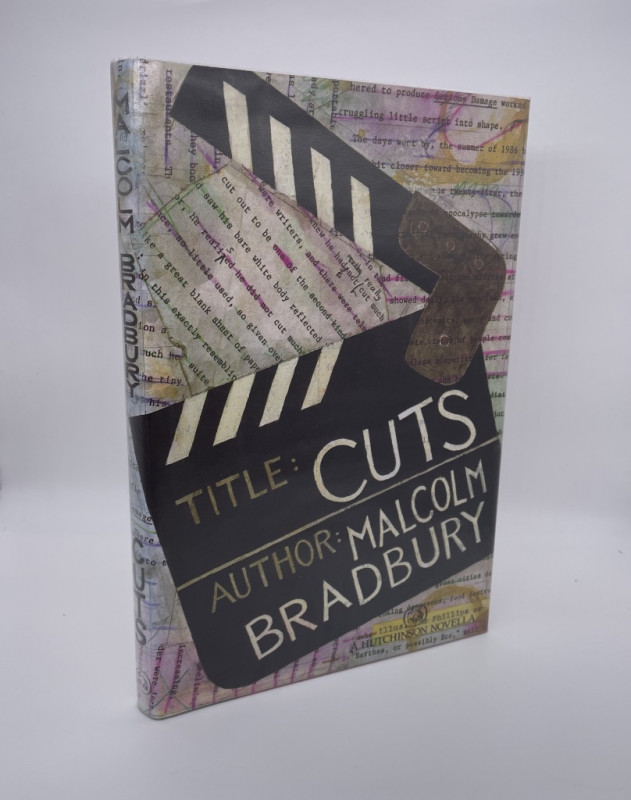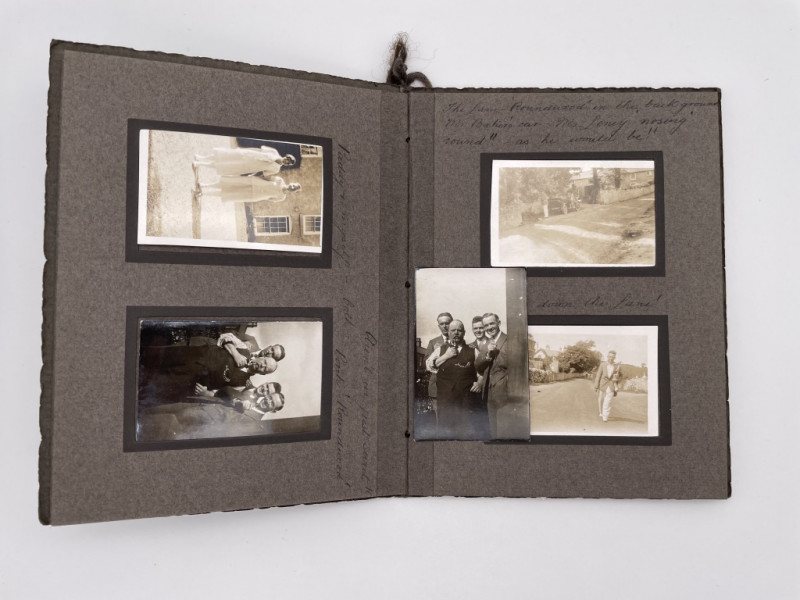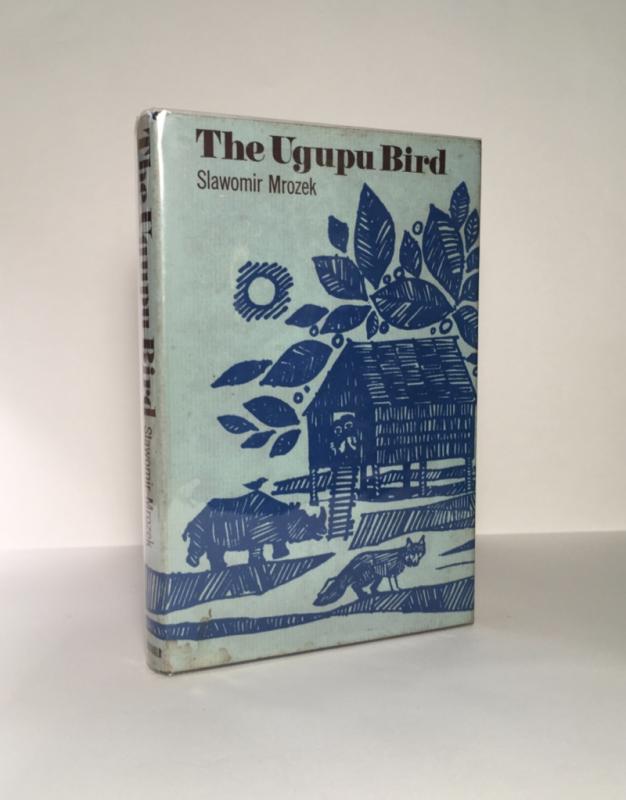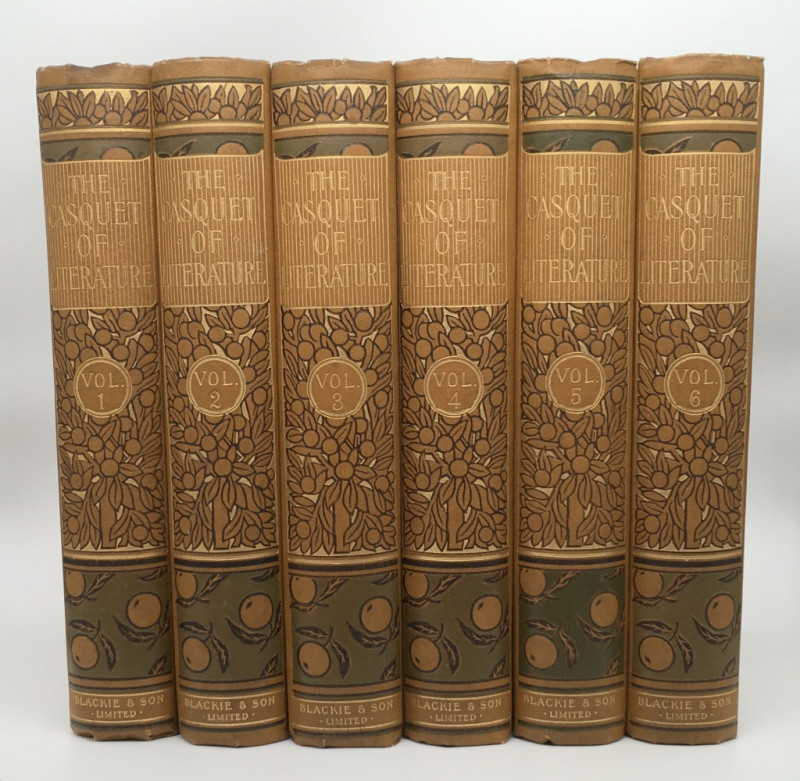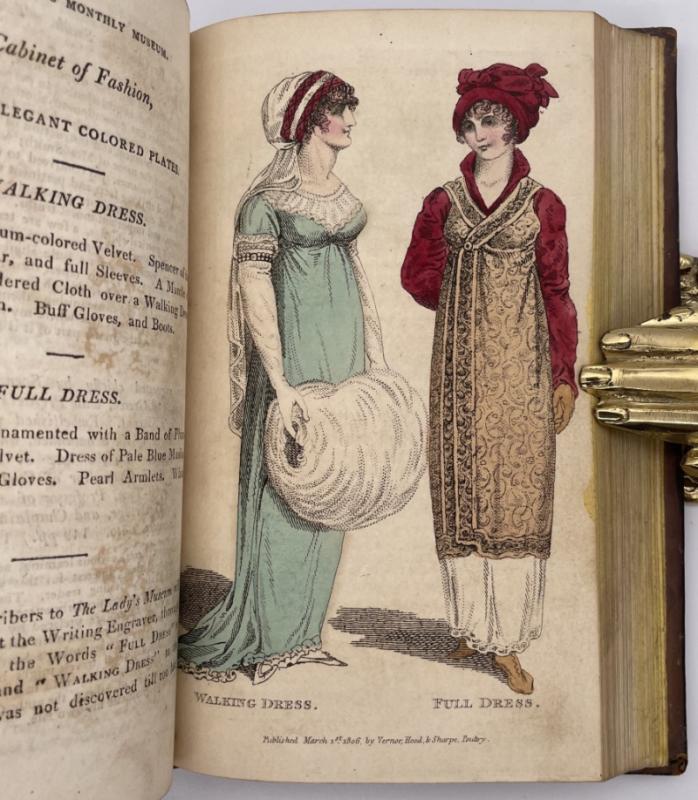Stephania: A trialogue
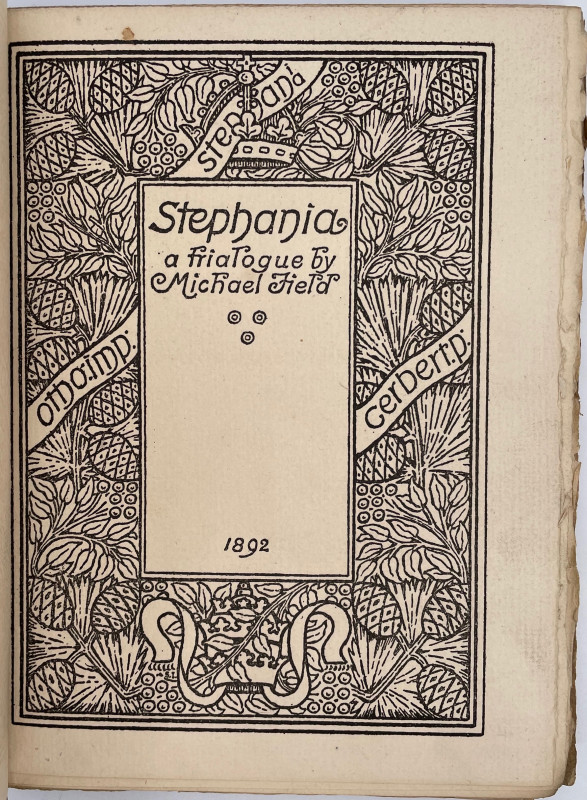

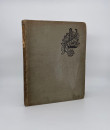

Book Description
FIRST EDITION, LIMITED EDITION, unnumbered of 250. Pot 4to (in 8s), pp. [xii], 100, [4], [2 Press Notices for Sight and Song & The Tragic Mary], [2 catalogue], incl. intricate illustrated title page, and colophon, by Selwyn Image (see miscellany title page). Grey paper boards, paper title label lettered in black (significantly rubbed) to spine, Image’s binding ornament in black to upper board. Edges untrimmed. Joints and spine ends professionally repaired, edgewear, heaviest at now rounded corners, spine darkened, boards faintly stained and scored. Edges dust darkened. Offsetting to endpapers, previous bookseller note in pencil to rear endpaper, occasional spots, else, clean and tight. A rather pleasing copy of an attractive edition of Michael Field’s trialogue. Fairly well-represented in British research libraries, rare in the trade. Good+
Dealer Notes
Michael Field was the pseudonym and creative persona of Katherine Bradley (1846–1914) and Edith Cooper (1862–1913), the British aunt and niece, who lived, loved, and collaborated together over nearly four decades: “we are closer married [than the Brownings, the celebrity literary couple of the era]”, they wrote in Works and Days, their extensive diary project, and in a letter to Havelock Ellis, observed: “Let no man think he can put asunder what God has joined [...] We cross and interlace like a company of dancing summer flies; if one begins a character, his companion seizes and possesses it; if one conceives a scene or situation, the other corrects, completes, or murderously cuts away.” It was a prolific partnership that produced 27 verse dramas, eight poetry collections and one masque, which speak variously to their progressive stances and support for the women’s suffrage and antivivisection movements, vegetarianism and paganism, their deep engagement with the Classics, and female same-sex desire. Their poems were “often strikingly erotic, especially those in Long Ago and Underneath the Bough” (Castle, 2003), with the latter taking its title and epigraph from The Rubáiyát of Omar Khayyám. Bradley and Cooper adopted male names – Michael and Henry, respectively – and male pronouns: in their diary “they almost always speak of each other as ‘he’” (Dever, 2022).
The couple favoured beautiful books with short print runs and while their works never sold in huge numbers, their early output “attracted an elite set of influential admirers” and made Michael Field “minor celebrities in the fin-de-siècle literary world” (Castle, 2003). Having been outed by their mentor and friend, Robert Browning, from 1892 – coinciding with the publication of Stephania, Sight and Song and Underneath the Bough – “their work was treated with ever-increasing coldness by the literary world, and there was no doubt that the discovery that Michael Field was no avatar ... but two women, was partly responsible.” (T. Sturge Moore cited in Castle, 2003).
Stephania is an innovative closet drama set in Rome over three days in January, A.D. 1002, featuring a Pope, an Emperor, and a Courtesan, the eponymous Stephania, who is “bent on seduction of her mortal enemy”. Michelle S. Lee has read the trialogue as a direct riposte to the critical volte face, describing it as “themed with victorious female vengeance” as the ex-empress-cum-courtesan “triumphs as symbolic queen/ emperor.” (Lee, 2018).
During this strained, yet significant period, Sussex-born artist Selwyn Image (1849-1930) designed and decorated a number of Field titles (see also item 3). Image had studied under John Ruskin and became the seventh Slade Professor of Fine Art at Oxford (1910-16). He is best known for his stained-glass designs, but produced a number of decorative title pages, covers and binding designs for books during the 1890s. His drawings are held by the British Museum, V&A and Ashmolean Museum, as well as in public collections in Birmingham, Glasgow, Newcastle, Nottingham, Bristol, Dublin, and Melbourne.
Terry Castle (ed.) (2003) The Literature of Lesbianism: A historical anthology from Ariosto to Stonewall. NY: Columbia University Press; Virginia Blain (1996) ‘“Michael Field, the two-headed nightingale”: Lesbian text as palimpsest,’ Women’s History Review, 5:2, pp. 239-25; Douglas Mau & Carolyn Dever (2022) ‘“Love and Beauty Their Prison”: Talking with Carolyn Dever on Michael Field,’ Public Books Blog; Michelle S. Lee (2018) ‘The closet drama as a space for female fortitude and artistic agency’ in Catherine Burroughs (ed.) Closet Drama: History, theory. London: Routledge.
[ref: 1909]
The couple favoured beautiful books with short print runs and while their works never sold in huge numbers, their early output “attracted an elite set of influential admirers” and made Michael Field “minor celebrities in the fin-de-siècle literary world” (Castle, 2003). Having been outed by their mentor and friend, Robert Browning, from 1892 – coinciding with the publication of Stephania, Sight and Song and Underneath the Bough – “their work was treated with ever-increasing coldness by the literary world, and there was no doubt that the discovery that Michael Field was no avatar ... but two women, was partly responsible.” (T. Sturge Moore cited in Castle, 2003).
Stephania is an innovative closet drama set in Rome over three days in January, A.D. 1002, featuring a Pope, an Emperor, and a Courtesan, the eponymous Stephania, who is “bent on seduction of her mortal enemy”. Michelle S. Lee has read the trialogue as a direct riposte to the critical volte face, describing it as “themed with victorious female vengeance” as the ex-empress-cum-courtesan “triumphs as symbolic queen/ emperor.” (Lee, 2018).
During this strained, yet significant period, Sussex-born artist Selwyn Image (1849-1930) designed and decorated a number of Field titles (see also item 3). Image had studied under John Ruskin and became the seventh Slade Professor of Fine Art at Oxford (1910-16). He is best known for his stained-glass designs, but produced a number of decorative title pages, covers and binding designs for books during the 1890s. His drawings are held by the British Museum, V&A and Ashmolean Museum, as well as in public collections in Birmingham, Glasgow, Newcastle, Nottingham, Bristol, Dublin, and Melbourne.
Terry Castle (ed.) (2003) The Literature of Lesbianism: A historical anthology from Ariosto to Stonewall. NY: Columbia University Press; Virginia Blain (1996) ‘“Michael Field, the two-headed nightingale”: Lesbian text as palimpsest,’ Women’s History Review, 5:2, pp. 239-25; Douglas Mau & Carolyn Dever (2022) ‘“Love and Beauty Their Prison”: Talking with Carolyn Dever on Michael Field,’ Public Books Blog; Michelle S. Lee (2018) ‘The closet drama as a space for female fortitude and artistic agency’ in Catherine Burroughs (ed.) Closet Drama: History, theory. London: Routledge.
[ref: 1909]
Author
FIELD, Michael [i.e. BRADLEY, Katherine and COOPER, Edith]; IMAGE, Selwyn
Date
1892
Publisher
London: Elkin Mathews & John Lane
Condition
Good+
Friends of the PBFA
For £10 get free entry to our fairs, updates from the PBFA and more.
Please email info@pbfa.org for more information
